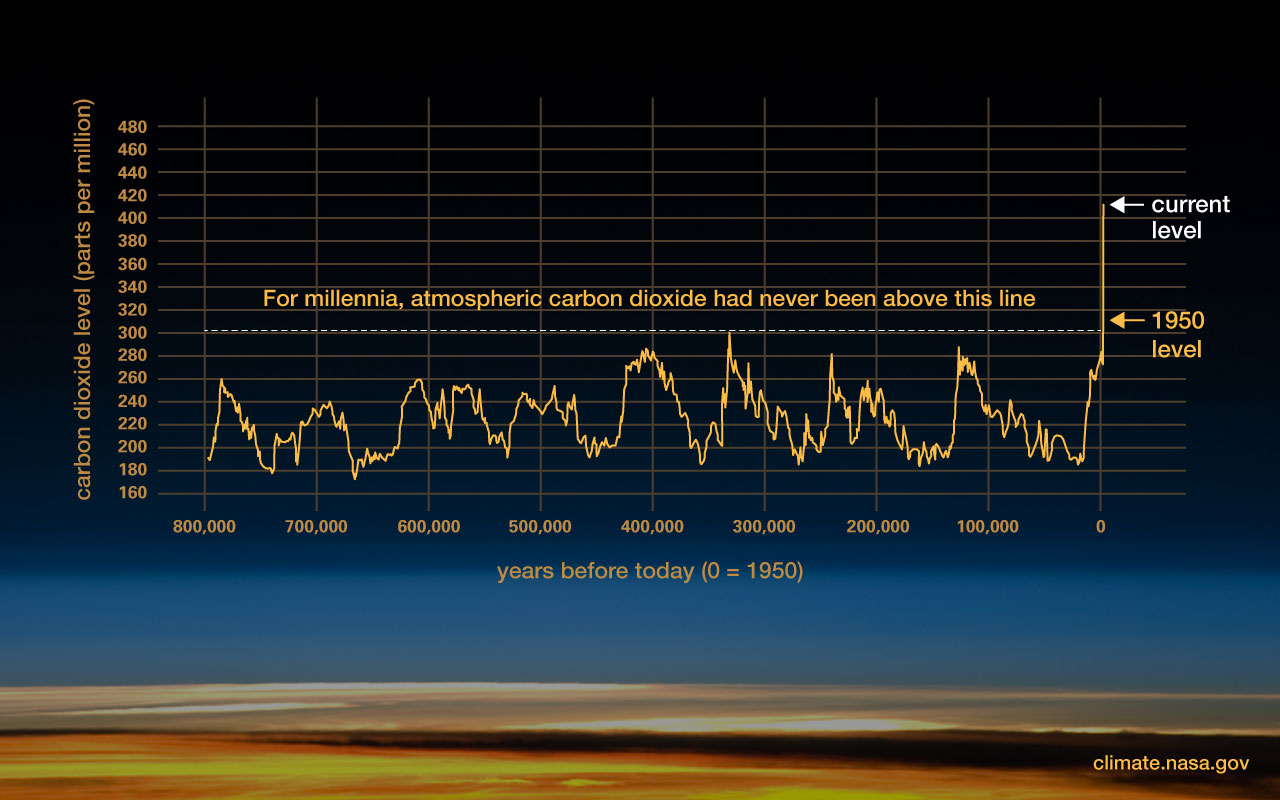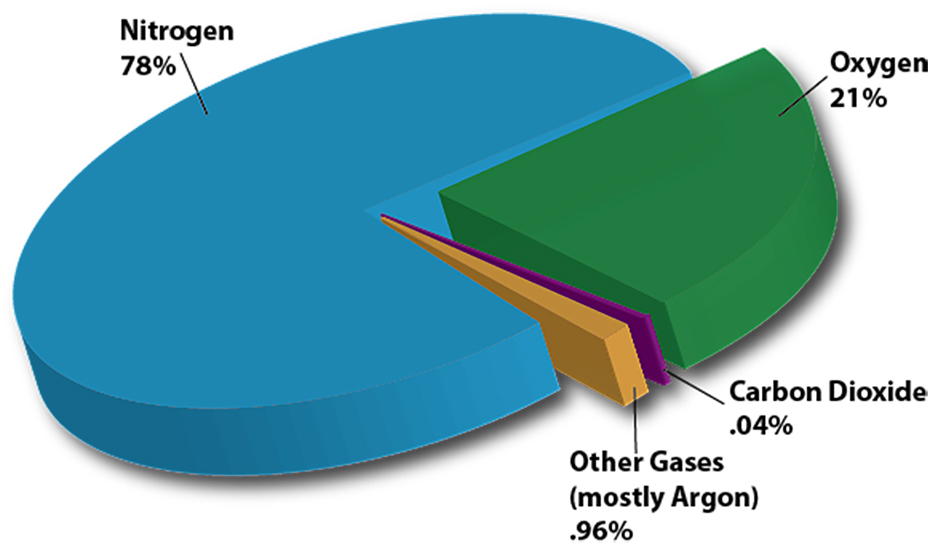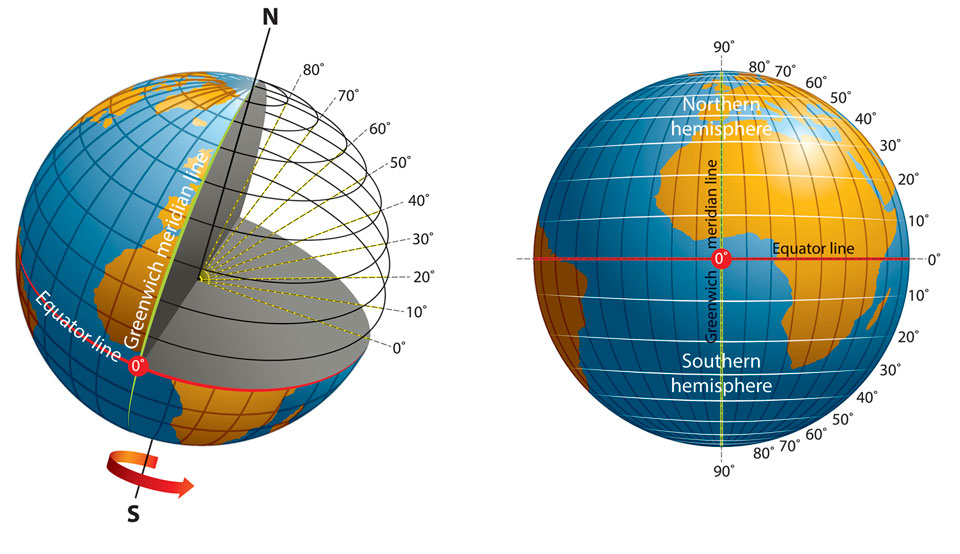Climate Change: A Complex Phenomenon
In the past 50 years, The U.S. has declined from what many called the ‘greatest economy’ in human history, to a godless country with virtually nothing left in common with our founding principles.
This article will be the first of many akin, casting light on both the symptoms and reasons why America has lost its way and ultimately, the navigable path to rebirth. Given the current economic climate, I find it prudent to open this series of articles with the highly debated issues revolving around climate change. Prepare for facts and truth to be revealed.
Climate ‘change’ is a complex phenomenon few people understand, let alone geoscientists and climatologists, all who argue over empirical data interpretations. Last but not least, I find it outrageous and dangerous for politicians to be meddling in a scientific sector they know nothing about, merely to purport their agendas.
Even a fairly casual reading of the various observations over the past century leaves no doubt that both the temperature of the earth and greenhouse gasses in the atmosphere are rising.
But even these two seemingly undeniable facts need both quantification and justification.
Looking at the U.S. for example, the temperature today (average over the past 12 months) is lower than the average temperature back in 1934. In all fairness, the average temperature in 1934 has been exceeded over the past two decades. I wouldn’t argue that one singular temperature reading taken 90 years ago should be enough to contest the current uptrend in temperatures. Still the situation gets a bit more vexing when you look at particular months within years. In the U.S. the hottest month of the year is July. And the hottest July that Americans have experienced since we started observing temperatures was July 1934. Due to the fact that our major worry when it comes to the ‘climate’ is increased heat… Is anyone ‘alarmed’ to realize the hottest July ever recorded in America was during the Great Depression?
As of this writing, the U.S. is more than a decade beyond the last temperature peak, which occurred in 2012 and many could make a strong argument that we are overdue for another. Looking through a macroscopic lens of the world as a whole, we are roughly six years past the last ‘temperature’ peak. To make an iron clad case against the cult religion of global warming, we’re going to have to level up with a lot more empirical evidence!

Waging War Against Fossil Fuels: Another Bad Idea
A full-fledged fight against global warming – which means a total effort to eliminate or even ban the use of fossil fuels – is in itself a terrible risk. Climate alarmists largely contribute the use of fossil fuels as the main culprit of global warming. This falsity is a key point that I will make evermore clear as we proceed, as ostensible uncertainties should not be so easily brushed off. Unless our belief in science and the scientific models that underlie climate change are so strong that to defy them would be unconscionable, then we need to take a second look at legitimate data versus conjecture.
The existential goal of many Western governments (including the U.S.) is to eliminate fossil fuel as a source of electricity by 2030 and as a source of all energy, hence the NetZero 2050 agenda. Climate alarmists warn humanity that if we collectively don’t take heed, the world may be facing uncontrollable disaster stemming from climate changes running amok. But whose agenda is this, really?
The basis of most ‘climate change’ models states that the current warming (which is widely agreed to be caused by rising CO2 emanating from our use of fossil fuel) has started to create positive feedbacks – vicious circles that will lead to uncontrollable global warming that feeds on itself and poses a threat to humanity.
As I will attempt to present; these models are upon close examination – especially from a wrath of new research – best seen in terms of negative feedback that will balance the warming effects. Moreover, the only positive feedbacks related to the greening of the earth, i.e., the growing ability of the planet to increase its food supply – a critical component in alleviating undernourishment that currently describes over 40% of the earth’s population. For reasons wholly incomprehensible, we want to shut down highly desirable positive feedback in exchange for an agenda that could lead to our extinction.
Is it only me… or does this make anyone else feel a bit unsettled?
The starting point in all ‘climate’ models is that the relationship between CO2 emissions and temperature changes are critical to our climate over the indefinite future. Climate scientists are in strong agreement that the models they have developed prove convincing evidence that rising CO2 levels have been the catalyst for increases in temperature over the same time period. Still, it’s necessary to put into context the herculean task the climate scientists have putatively succeeded in solving. It’s important to emphasize that few quarrel with the fact that the earth is getting warmer nor with the fact that some of this warming is the result of burning fossil fuels. The major quarrel is the magnitude of this effect. Does it justify some sort of uncontrollable increase in temperature or does it mean di minimums increases in temperature?
This is not an easy question to answer. To see why, let’s start with some pertinent observations about our atmosphere. Fact: CO2 is a minute part of our atmosphere. Nitrogen and oxygen account for 97%, water vapor accounts for about 3%, argon is next with a bit less than 1%. After argon comes natural CO2, followed by man-made CO2 and sundry others as indicated in the table featured below.

Water Vaper’s Role In Human Survival
Water vapor, by far the most important greenhouse gas, absorbs about 90% of the heat the earth radiates. That is a good thing because without a portion of the sun’s radiated heat remaining in the atmosphere, the world would become too cold for humanity to survive. Generally speaking, without greenhouse gasses the earth would reflect a much greater percentage of the sun’s radiation through the atmosphere, leaving our planet to plunge into another ice age. An estimate on which almost all climatologists would agree: eliminating greenhouse gasses would result in a 50 degree (Fahrenheit) drop in the Earth’s overall temperature.
Greater amounts of water vapor, which would be consistent with higher temperatures and humidity, stands in contrast to a reduction in water vapor that would have no noticeable effect on the earth’s temperature. Water vapor absorbs about 100% of the heat that is radiated at certain wavelengths and none at other wavelengths. As stated in the previous paragraph, those wavelengths represent about 90% of the radiated heat. Water vapor is responsible for producing clouds, which reflect more of the sun’s cosmic rays back out into space than they shield from leaving the planet. This is especially true with puffy low-lying clouds but the reverse is true for those wispy high cirrus clouds which allow much more heat to pass through than they reflect back into outer space.
Water vapor, unlike other greenhouse gasses (GHG), varies in concentration across the planet. The concentration of water vapor is strongly correlated with planet temperatures, meaning its concentration tends to be highest near the equatorial tropics and decreases from a latitudinal perspective when you traverse north or south toward the poles of the planet. Moreover, water vapor has a cycle of absorption, cloud formation, precipitation and once again, absorption. This virtuous cycle, especially the types of clouds associated with water vapor, are amongst the most disputed aspects of climate change arguments.

Nemesis: CO2
The gas that is front and center in the argument for global warming is, of course, CO2, which accounts for about .04% of the earth’s atmosphere and absorbs about 7% of the radiated heat. Of that 7%, roughly 95% is natural CO2, the kind that comes from the oceans, plants, forests, and vegetation. Five percent or less comes from man-made CO2, meaning fossil fuels.
To give you a broad perspective on these numbers; natural CO2 represents about 420 parts per million (PPM) in the atmosphere, while man-made CO2 accounts for 20 or fewer PPM in the atmosphere. Unlike water vapor, however, CO2 does not absorb 100% of what it could potentially absorb. That’s because CO2 is not fully saturated. The meaning of saturated in this context is often described by scientists as the “black paint” effect. A totally black surface will absorb all the heat that is radiated. If you apply one coat of black to a farm door, the door would absorb a large portion of radiated heat. The gain from additional coats would be less and less until it was too small to measure. Depending on whether you are a climate alarmist or denier, you either believe CO2 is nearly fully saturated and further increases will have little effect or that CO2 (at least partially saturated) will migrate to higher levels in the atmosphere where it’s not currently present and therefore, continue to warm the planet.
The 3 Minute Story of 800,000 Years of Climate Change
For about 800,00 years, CO2, according to scientific analysis from such sources as ice cores, as a percentage of the atmosphere, ranged from 150 parts per million (PPM) or .015% to 300 PPM. Then between 1950 and today, CO2 levels climbed to about 420 PPM. Most scientists, even those that dismiss the urgency attached to climate change as a ‘grave threat’ still don’t dispute that the bulk of the recent PPM gains come from man-made sources and have likely had some warming effect on the planet. Exactly how much warming and whether that is a good thing or a bad thing is entirely another matter.
Climate alarmists believe that increases in man-made CO2, as opposed to changes in natural CO2, have accounted for the temperature increases since the Industrial Revolution. The dates are geological estimates for temperature and CO2 (say from ice cores and tree rings) prior to 1900 for measuring temperatures and prior to 1960 for measuring CO2.

Good records for CO2 concentrations began in 1960 from a subaerial volcano in Hawaii named Mauna Loa, where the air is exceptionally clear. Measures of CO2 from satellites and different regional points are also made, but measurements from Mauna Loa have become the benchmark. For measures of man-made CO2, there are probably a number of places you can find data. Temperature measurements first began in the U.S. circa 1900, which with few exceptions such as a relatively small English town, were the first. Even today the majority of the planet does not have anywhere close to the number of stations for measuring temperature needed to come up with reliable measurements. For example, China and Russia both have three stations that possess longer-term records, while India only has four.
Numbers Don’t Lie But The Math Doesn’t Add Up
It seems the easiest and most accessible summary for estimates of man-made CO2 emissions comes from the statistical summaries of energy produced by British Petroleum, which since 1965 have included man-made CO2 emissions. What is immediately striking about any of these man-made numbers is how precise they are. In 2022 for example, the planet’s use of fossil fuels emitted 34.3741 gigatons of CO2 or 4.39 PPM of CO2 into the atmosphere. That kind of precision is unusual for any human activity. CO2 emitted from gasoline depends on the percentage of octane and water in the mixture – numbers which can vary. Moreover, the formula for converting PPM to gigatons is usually expressed to just two decimal places or three significant digits. More importantly, most of the numbers to convert molecules of say, gasoline to CO2 use two or three significant digits. I can understand why climate alarmists would want to use numbers implying over-precise estimates. As I will explain later, these kinds of models can give you at best, imprecise estimates. For example, the PPM of man-made CO2 in 2013 has recently been revised lower by nearly 7%. That kind of imprecision can have profound consequences in complex models.
In Europe during 2019, which was the last year a report on the measurement of man-made CO2 was released, the following statement was found in the preamble to a detailed 70-page report:
“The report acknowledges that suitably high measurement standards are already present within existing networks such as the Integrated Carbon Observation System (ICOS) but explains why these are not adequate for an operational system whose primary purpose is to quantify anthropogenic CO2 emissions.”
In other words, after many years of trying, we really don’t have adequate ways of measuring man-made CO2. Okay, let that resonate for a few… moments.
Just go back to the 2022 figure of 4.39 PPM of emitted man-made CO2. That number represents over 1% of atmospheric CO2. That is a ludicrous amount even the most extreme alarmist would have trouble explaining. Indeed, for the first two decades of the 21st century man-made emissions have amounted to 600.1541 gigatons of CO2, equivalent to 76.6411 PPM. Adding 76.4 PPM to atmospheric CO2 is tantamount to adding 23% of CO2 to the atmosphere. Yet the actual increase in CO2 was about 12% or 42 PPM. Moreover, between 1960 and 2022, the amount of man-made CO2 emitted works out to about 180 PPM, which would suggest that CO2 in the atmosphere would be about 500 PPM, instead of 419 PPM. Obviously, that measurement is inconsistent unless one considers the role of sinks.
Let This Sink In…
The ocean and parts of the earth’s landmass absorb a portion of CO2, referred to as CO2 sinks, which are a natural phenomena that absorb nascent CO2. In the case of the oceans, the amount of CO2 absorbed tends to rise with CO2 levels. The reasons are not well understood but most likely have something to do with clouds and oceanic water temperatures. In the case of the earth’s landmass, the CO2 absorption is directly related to plant life. These sinks have been reducing an increasing percentage of man-made CO2. Between 1960 and 2022 the sinks reduced man-made CO2 by about 42%. During the recent 2020 to 2022 period, the reduction had increased to about 52%. Before considering feedback, the sinks in conjunction with a sharp slowdown in man-made CO2 could be an extremely serious problem.
A sharp reduction in man-made CO2 could, in fact lead to a major – perhaps even existential problem. Here’s why. Suppose the goals of the Intergovernmental Panel on Climate Change (IPCC), the UN agency tasked with analyzing and recommending remedial action with respect to CO2. And other climate matters are at least partially reached and sometime in the not-too-distant future, carbon emissions are reduced to zero. Lags between sink absorption and the reduction of man-made CO2, could result in total atmospheric CO2 being sharply reduced.
If the lags between man-made reduction and sinks were decadal then (given that current sinks reduce man-made CO2 by 150%) suppose for the next 50 years CO2 rises by 1 PPM per year. Then factor that the CO2 reductions due to sinks remains at 2022 levels of about 6 PPM, this would imply a net reduction of CO2 of about 250 PPM. Ever more reason for concern, that downtrend could bring CO2 levels below 200 PPM or to levels not witnessed in billions of years, if ever. Catastrophic implications are nearly impossible to exaggerate. I point this out to make you realize the very small and plausible difference between a little too much and a bit too little.
I believe the climate alarmists arguments are likely less plausible than my made-up illustration presented in this article. So, what is the argument all about? It’s generally agreed that doubling CO2 levels increases earth’s temperatures by about 1 degree centigrade. That is a baseline effect, which according to the IPCC would have little (if any) impact on the economy. Indeed, the IPCC is on record as saying that increases, perhaps an increase as high as 3 degrees centigrade, would have only minimal effects, perhaps lowering GDP growth by .2% per year over the next 50 to 80 years. The alarmists get their name by insisting the world is at a tipping point. In 2100 plus or minus a decade or so, the earth will enter a kind of vicious circle, a tipping point characterized by feedback that is self-reinforcing. This vicious circle will send temperatures vaulting ever higher. Weather related disasters will likely become apocalyptic.
“I think the evidence for a vicious circle of climate change forecasted has no evidence in its favor.”
Indeed, I think overall further global warming could be enormously helpful dealing with the pressing problem of chronic global food shortages. At the same time, I wholly agree that we need sustainable energies because fossil fuels are inevitably not a long term solution. Creating a virtuous circle of sustainable energy can both pave the way for interim economic progress while helping lay a framework for developing the kind of sustainable energy infrastructure that will lead us into centuries and even millennia beyond.
Solar Only Accounts For 1% Of Global Energy Production
For example, there is only a limited supply of helium3 on earth, which means using fusion energy as a major energy source is constrained. But human bases on the moon where helium3 is plentiful could make transport of helium3 from the moon a possible reality. Which in turn could make nuclear fusion a reality, who’s only leading by-product is water, the leading candidate for a sustainable future. Renewables like solar will help but it’s becoming evident that even industrial solar is far from sufficient.
For example, according to the most recent data, converting solar light to energy through photovoltaic panels or mirrors, after more than 20 years of seemingly hectic activity, only accounts for about 1% of the total energy the earth produces annually. It goes without saying that whatever major energy sources we develop, however we use the warming earth to our advantage will require humankind to put aside its arguments and begin to cooperate on a grand level.
Stay Tuned for my next article! In the meantime, check out my latest book which you can preview for free on Amazon Kindle or Audible!


















